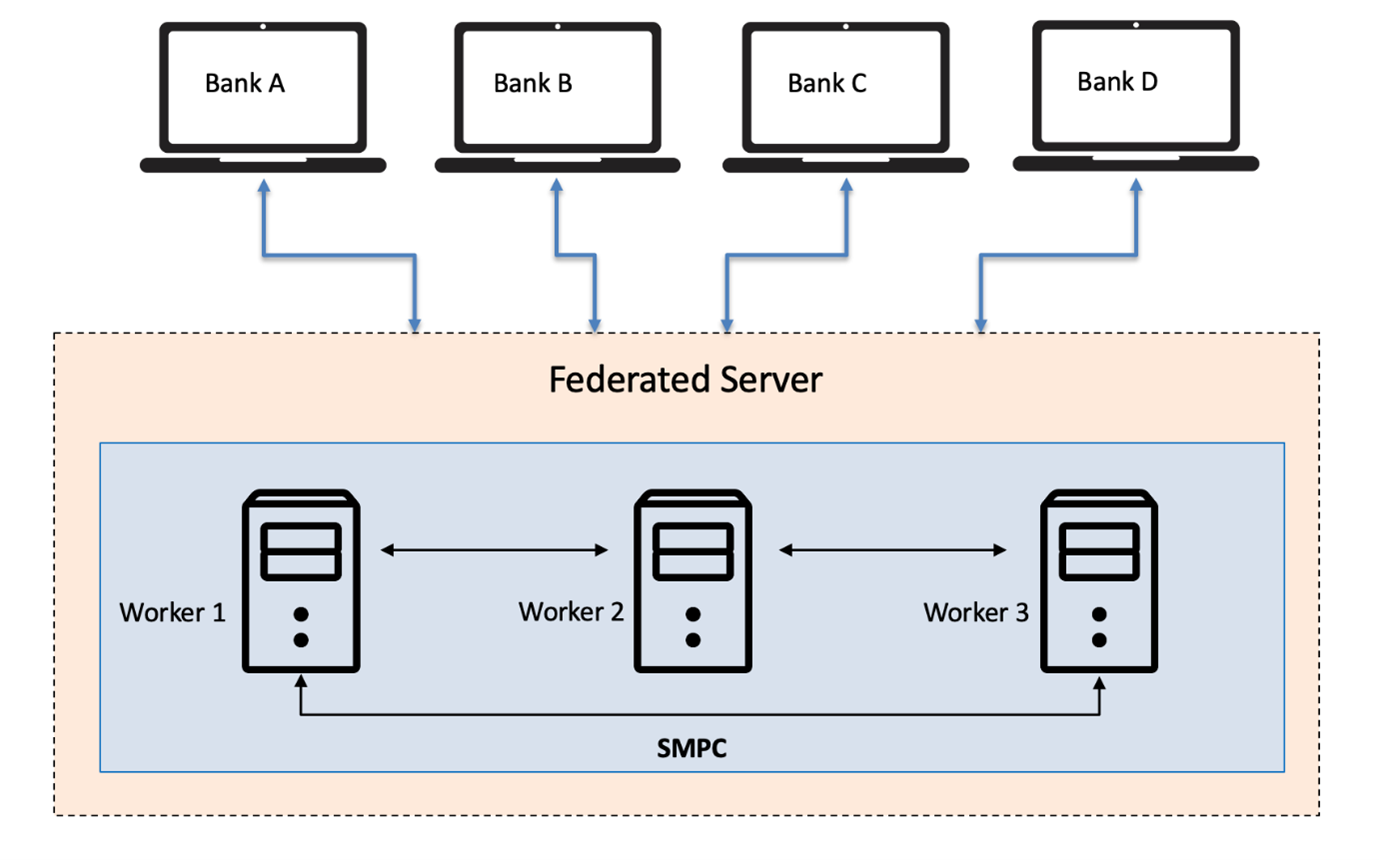
Secure Federated AI
Synopsis
Secure federated artificial intelligence (AI) enables cross-institution data analysis without data leakage, using secure protocols to aggregate individual models into a global model for insights on an industry, regional or global level.
Opportunity
Most data analysis is performed in a silo manner, with institutions restricted to their own customers’ or operational data, in addition to external publicly available data, for analysis using analytical, machine learning or statistical techniques. Any insights obtain thereof are confined to the institution.
Hence, there is a growing need for big-picture analysis, be it on an industry, regional or global level. This requires cross-institutional data to be made available. However, such access is generally not possible, either due to regulatory constraints or concerns regarding privacy and confidentiality.
Technology
This secure federated AI technology allows cross-institution data analysis through a series of steps:
- Enables each institution to first perform its local data analysis, which results in a learned model;
- Each institution then securely sends the learned model to a centralised or decentralised server;
- The server securely aggregates all the individual models into a single global model; and
- The server securely shares the global model with individual institution(s).
Throughout these operations, data confidentiality is maintained using a suite of provably secure protocols we have developed, ensuring no data leakage occurs before, during, or after the process.

Figure 1: Secure federated artificial intelligence (AI) permits cross-institution data analysis while ensuring that the data of each institution remains confidential before, during and after the analysis process, preventing any leakage to other institutions.
Applications & Advantages
- Cross-bank analysis to combat money laundering/terrorist financing.
- Cross-hospital analysis to obtain big-picture view of the spread of a new virus/disease to new geographical areas.
- Cross-branch analysis for a multi-national corporation to obtain big-picture view of branches’ performance.
- Cross-agency analysis for government to obtain big-picture view of service objectives/achievements.














/enri-thumbnails/careeropportunities1f0caf1c-a12d-479c-be7c-3c04e085c617.tmb-mega-menu.jpg?Culture=en&sfvrsn=d7261e3b_1)

/cradle-thumbnails/research-capabilities1516d0ba63aa44f0b4ee77a8c05263b2.tmb-mega-menu.jpg?Culture=en&sfvrsn=1bc94f8_1)

7e6fdc03-9018-4d08-9a98-8a21acbc37ba.tmb-mega-menu.jpg?Culture=en&sfvrsn=7deaf618_1)














